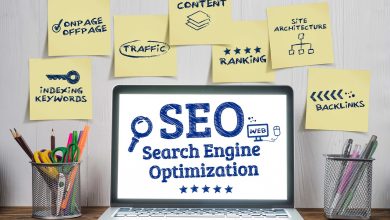
How do you crack a competitive field like advertising with so many layers on analysis openly available for everyone to use? From demographics of age, gender, location freely available direct from platforms, to more in-depth like salary range, occupation, and level of education on paid for analytic platforms. With your competitors on a level playing field with you, it makes it increasingly difficult to gain an advantage over your competitors to engage with your audience.
Extracting this data and the language used in review sites, across social media and forums allows us to create a sentiment tracker, processing the language on a scale of positive to negative. So rather than commissioning a polling company to speak to their data sets of maybe only a couple of 100 or even thousand contacts, Natural Language Processing (NLP) allows you to extract the sentiment and feelings over every customer that has reviewed your product online as well as your competitors. NLP is able to process positive, negative, and neutral opinions, placing these reviews and thoughts on a scale to understand how individuals feel towards your product, your brand, and your company as a whole.
NLP allows us to understand why your consumers use the language they use and the feelings they have towards you. This enables you to write advertisements in your consumer’s language, making your ability to communicate with them resonate more strongly. Leading to a more powerful advert and in turn leading to higher engagement and therefore a higher return.
Review Sites and e-commerce
Customers leave reviews about your product either directly through review sites or e-commerce, like Trustpilot or amazon, but also passively through social media and forums. Now most companies are very good at utilising the star system that a site like Trustpilot gives them in order to attract new customers through advertising their four and five-star reviews. The quantitative data that these review sites put out is very good in showcasing the quality of your product, but how do you understand how a consumer feels towards you by just using quantitative data. The advances in Artificial Intelligence (AI) and the use of NLP have enabled us to find the sentiment that clients and customers of your brands and your products have towards your company. This allows us to tap into the mindset and the thought process of not only our current consumers but also our competitor’s consumers.
Using NLP to find positive comments allows you to understand which words your customers use when describing your products and your brand as a whole, it allows you to understand which products are resonating well and which ad campaigns are delivering a maximum return. This can allow you to maximise keywords and search terms when constructing advertisements on platforms such as Google or Facebook. Rather than using broad generic keywords (often the more expensive of keywords), we can look at using the specific words used to describe your product by your customers. It can also allow you to understand what your competitors are doing well and extract this data to ensure that you can bring your company on par or better than them.
Negative comments can aid you in finding out if a specific product has a fault, a news story that is hurting your brand or if an ad campaign is not resonating or is not understood by your target market. By using real-time NLP analytics this gives you the ability to alter a campaign in real-time, understand the reasons why people are reacting negatively towards a news story, and being able to fix a problem with a specific product before it causes more negative traction. Utilising negative comments on your competitors allows you to understand how to win over their customers with their pain points laid out bare for you to know. This can help in forming a new campaign, the word of that campaign, and the focus.
Social Media and Forums
Social Media is a great example of how people use quantitative data to define success i.e. the number of likes, shares or re-tweets indicates how well a post is doing. Ignoring the pleather of data that sits underneath in the comment section. This data here is far more valuable, this is where the true feelings lie of your consumers, how they feel about the influencer you’re using, the individual product you’re showcasing, or the reaction to a news story your company is involved in. Taking the influencer example, we are able to understand who is better for your brand, someone with over 2 million followers may get a great number of likes but very little conversation and real engagement, or a micro-influencer with just a few thousand followers but with great conversation and emotional feeling towards your brand.

Forums allow us to explore the particular feelings of a service like bank accounts of insurance companies through the wording clients use to describe their customer service, benefits, and cost. Here we are able to look deep into threads to understand the pain points of your customers, what answers they require that could be improved on your FAQs. A forum is also where we find passionate communities of either brands or sectors who are often tight networks, so being able to understand what these members are saying is crucial in gaining positive brand awareness and projecting yourself forward as an industry leader.
Conclusion
In order to get ahead in the advertising game, it is crucial to move away from generic quantitative data of likes, shares and retweets leave it behind in the 2010s, it is time to move forward and utilise the AI that is there for you to gain an advantage over your competitors. NLP will help you understand your customers on a completely different level to your competitors, it will allow you to gain an advantage and springboard you to becoming an industry leader in customer retention, brand awareness, and real engagement. Being able to utilise one of the goals of sales “Listen 80% of the time and speak 20%” NLP allows you to listen in a noisy digital world.



